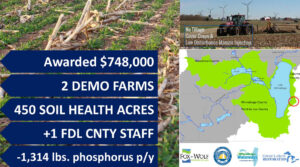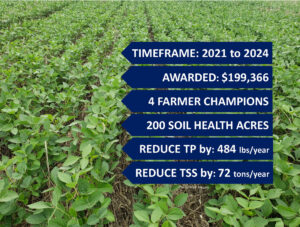Farming methods listed below are examples of best management practices that can improve soil health and reduce soil erosion. Benefits of soil health practices may be observed by the farmer in the first year of implementation. Other benefits may take a few years of consistent use for a farmer to see a net positive return. In general, farmers who have committed to long-term implementation of soil health practices have seen worthwhile improvements to soil health and the farms bottom line. This is why farmers who have tried these practices are encouraging other farmers in the region to adopt soil health practices and commit to implementing these practices multiple years in a row.
conservation tillage
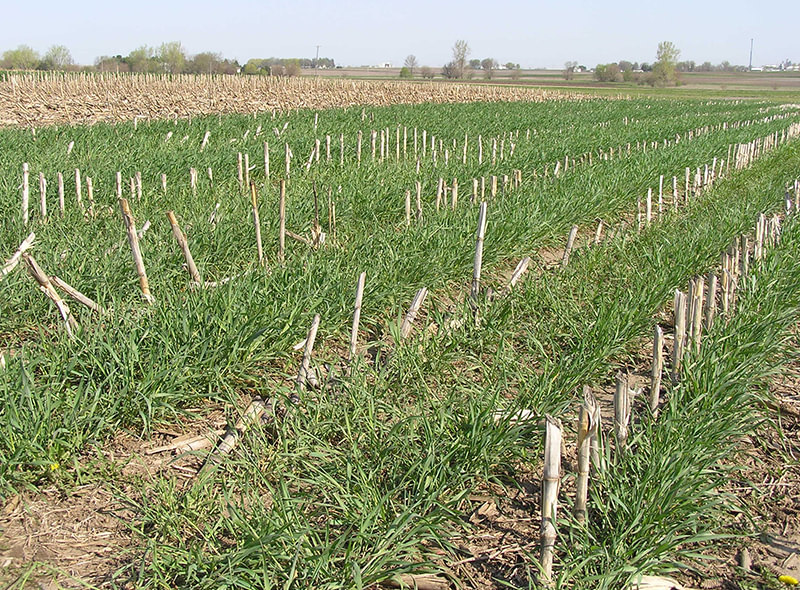
Traditional tillage of a field often leads to soil compaction and the exposed soil is more susceptible to erosion from rain, surface water runoff, and wind. Decreasing the disturbance of soil in a field helps improve soil health by increasing infiltration of water, decreasing soil compaction, and preventing loss of soil to erosion. Conservation tillage retains enough of the previous crop residue to cover at least 30% of the soil after planting.
No-till farming is a type of conservation tillage practice and is exactly what is sounds like – no soil is disturbed with plows or disks from harvest to planting. Through this method, a high percentage of crop residue remains.
Advantages of no-till:
- Reduced soil erosion (because of protection provided by crop residue)
- Increased soil organic matter
- Better soil structure
- Increased soil infiltration rates
- Reduced evaporation rates
- Less time and resource intensive
Cover crops
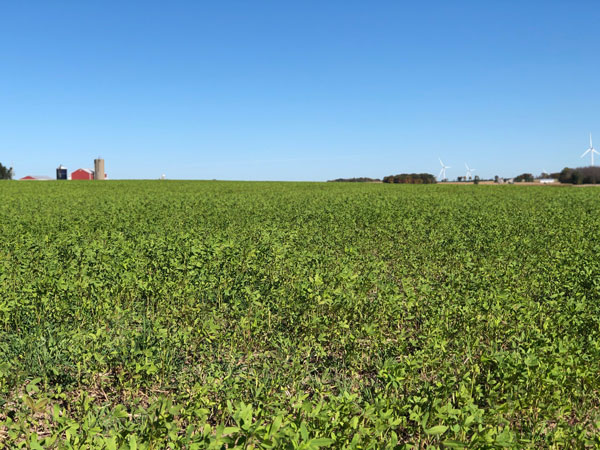
Cover crops keep soils covered and protected during off-season times when the soils in a farm field would otherwise be left bare. This practice has been shown to help improve soil health through:
- Reduced soil erosion
- Enhanced water infiltration and availability
- Better soil biodiversity
- Replenished soil nutrients
- Increased organic matter
Additional benefits can include:
- Reduced weed growth
- Better pest and disease control
- Attraction of pollinators
- Increased resilience during intense rainfall, wet periods, and periods of drought
- Increased crop yields
There are a variety of crops that can be used for cover including legumes, grasses, or small grains.
Low-disturbance manure application
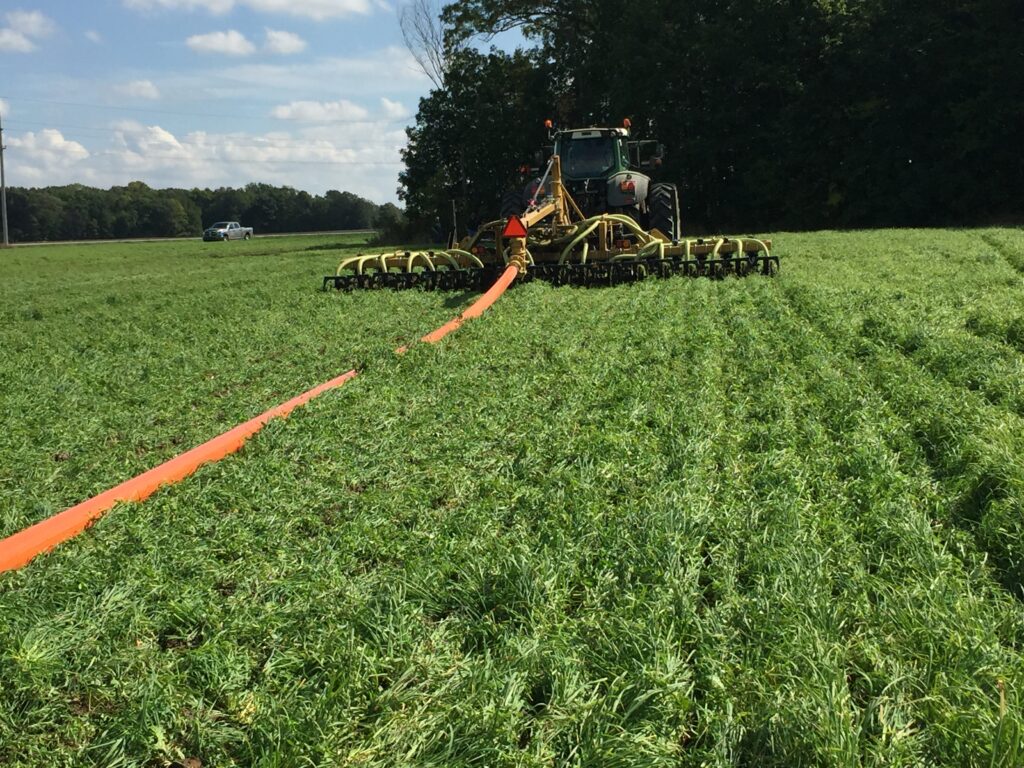
Low disturbance manure application helps to protect soil health by minimizing the disturbance of soil versus traditional application. Methods include broadcasting (surface application) or manure injection (injecting manure directly into the soil). There are pros and cons to each method. For fields in transition from traditional cultivation to soil health conservation, it is recommended that manure injection is used to help prevent nutrient loss through surface water runoff.
Manure injection benefits:
- Nitrogen and phosphorus retention
- Compatible with conservation tillage practices
- Compatible with cover crops
- Reduces odor
- Helps reduce risk of compaction
There can be a steep learning curve for farmers interested in transitioning from traditional farming practices to conservation farming. The transition may also require different equipment or equipment modifications which come at a cost. There are many resources available in the region to help farmers interested in implementing conservation practices to overcome these challenges:
- Agronomy Database
- Legislation & Nutrient Management Plans
- Soil Health & Cover Crops
- Equipment sharing and rental services
- Contacts
- Basin wide project information
- Demonstration farms
- Cost-share programs (contact your county conservation department or local NRCS office)
- Technical assistance through County Land & Water Conservation Departments
- Equipment sharing and rental services
- Farmer-to-farmer learning opportunities
Soil Health in Progress Project Partners:
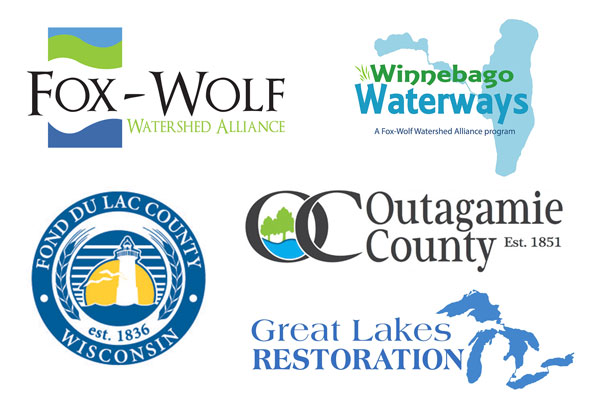
Share and access this website using: www.soilhealthinprogress.org

